Closer to Home

July 25, 2013 / Volunteering at the Butterfly Garden
Once a week I get to spend three hours in the Butterfly Garden at the Museum of Science in Boston, a small, green space I share with around 250 butterflies and a few moths, large numbers of plants, and a stream of visitors. Here are some questions they ask me:
Child visitor: Are those real?
Me: Yes! Nothing in here is fake! Those are Atlas Moths, and they are the biggest moths in the world, about 10 inches across. They live in Southeast Asia. Aren’t they gorgeous? Moths only fly at night, so that’s why those aren’t moving right now. 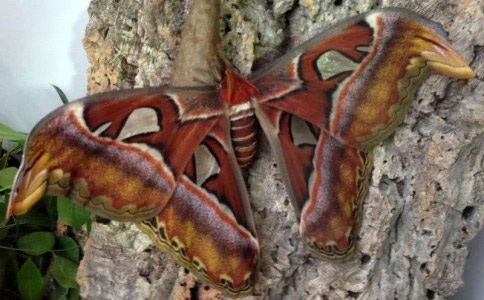
Visitor: So—I don’t see any caterpillars. Are they hiding?
Me: No, no caterpillars in here. The butterflies mate (see those over there?) [see image below] but she will only lay eggs on a leaf that is something her caterpillars can eat—and there are no caterpillar food plants here in the Butterfly Garden, so the females never lay eggs. You can imagine what would happen if we had thousands of caterpillars in here—they would eat all the plants.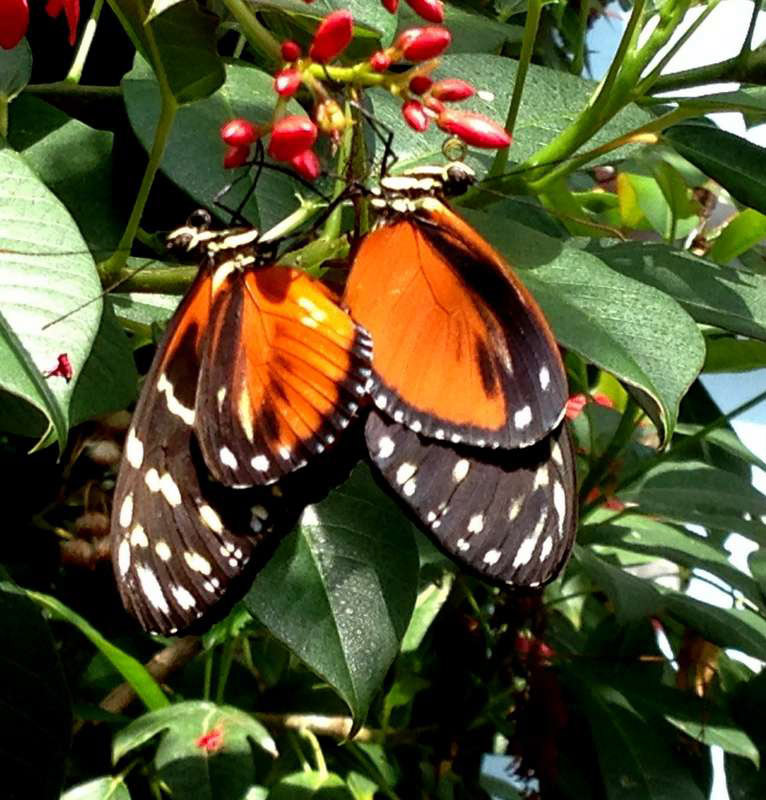
Visitor: What do the butterflies eat? How long do they live, about a year?
Me: They don’t eat anything at all. All they do is suck up nectar from the flowers, to give them energy to fly around and find a mate. Most of them only live one or two weeks!
Same visitor: One or two weeks!! Well, where do you get new ones?
Me: We buy about 500 chrysalises a week, from several suppliers. They raise the butterflies and caterpillars on “farms”—they don’t take them out of the wild. You can see some of the chrysalises in that case over there, waiting to hatch. The rest are out in the back. It costs about $1000 a week for all those chrysalises.
Still the same visitor: I never saw any butterflies around my house that look like these.
Me: Well, our butterflies come from all over the world, from every continent except Antarctica. We usually have about 25 or 30 different kinds in the Garden. 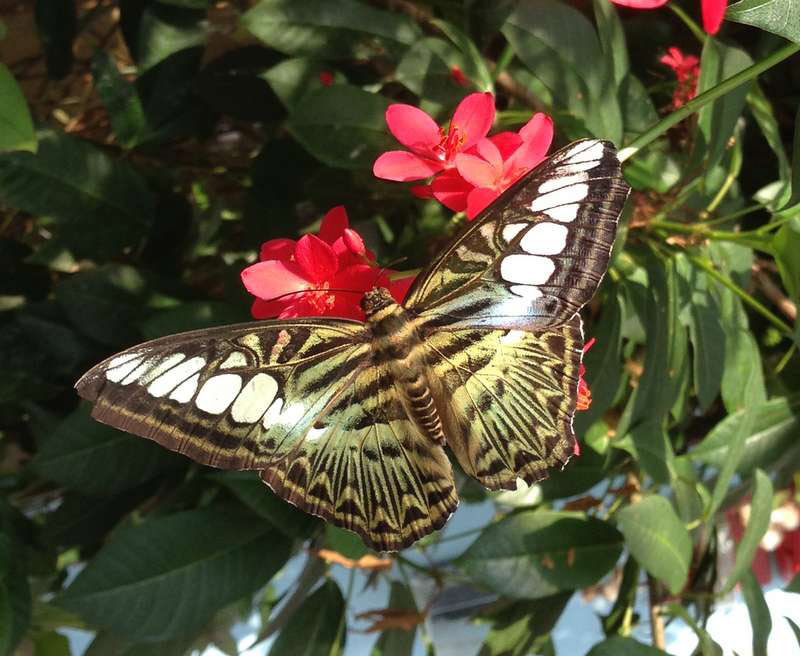
Visitor, looking at chrysalises in a display case: Are those alive??
Me: Yes, everything in here is alive. Butterflies will hatch out of those chrysalises. Different kinds of caterpillars formed them, after they had eaten and eaten and eaten and gotten bigger and bigger. A caterpillar will stay inside there for a while, a couple of weeks to a couple of months, depending what kind it is. And while it’s in there, its body changes from being a caterpillar to being a butterfly. It’s as amazing to me as if I wrapped up in a blanket one day and came out a few months later as a zebra! The new butterfly will find a mate, mate, lay eggs which will hatch into caterpillars, and it all starts over again.
Nervous visitor, screeching: OH! They’re flying too close to me!!
Me: It’s ok, they can’t hurt you at all. They have no mouth, you know, and no teeth. All they have is a little curled-up tube like a straw, called a proboscis, that they uncurl and stick down into a flower to suck up nectar. 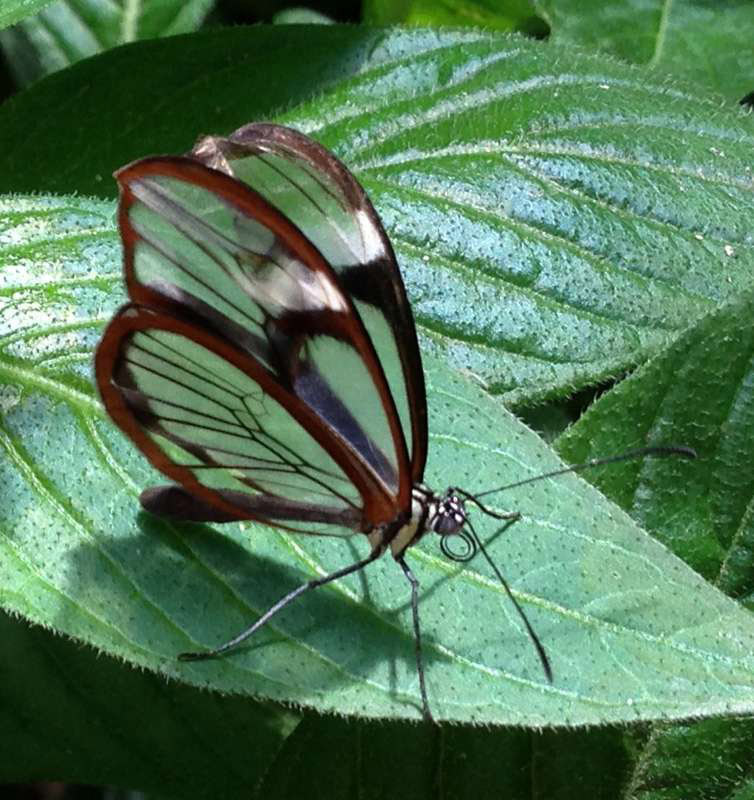
Same nervous visitor: But what if one lands on me??
Me: It might tickle a little. I had one of those huge blue ones land on my ear one time, and it rode around there like a big earring for half an hour while I was walking up and down and talking to people.
Visitor: How big does this kind get when it’s full-grown? Are there some baby ones to see?
Me: Well, the thing is, they don’t grow. When they hatch out of the chrysalis they are crumpled up—and they spend a couple of hours pumping a fluid in their bodies through their wings to stiffen them--but they are as big as they are going to get. Since they don’t grow bigger, they don’t have to eat anything.
Visitor: That one is hitting that one! Are they fighting?
Me: Yeah, I see how he keeps flying over and bonking the other one on its head! Actually one of them is a male and the other is a female, and he is hoping to get her attention so he can, you know, get lucky with her. Males can be territorial, too, and fly up and down defending a favorite space against other males.
Child visitor, hopefully: I saw a dead one under those plants. Want me to get it for you?
Me: Oh, thank you for finding it! No, don’t touch it—we can’t allow anyone to touch them. At the end of the day, the dead ones will be collected and then we put them in a special freezer, for three days. The cold in the freezer kills any little tiny bugs that might be on the dead butterflies, so when we finally discard them we won’t be letting something out that doesn’t live around here.
Many visitors: What a great place to work!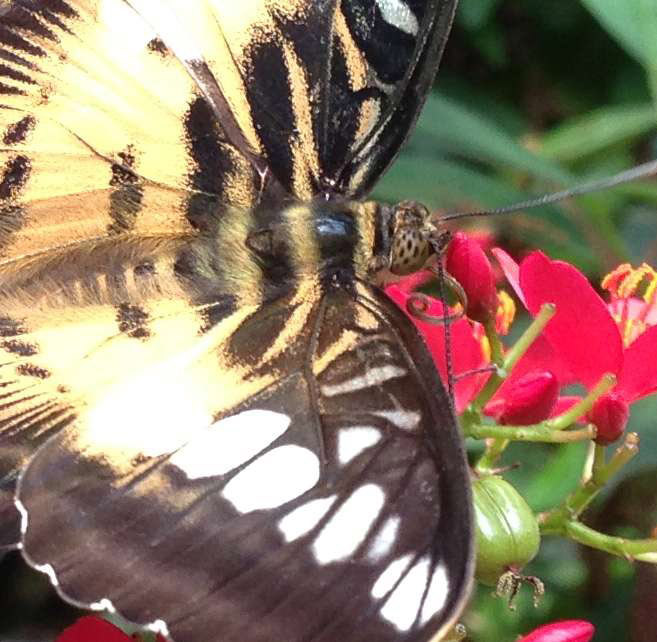
Me: Isn’t it?